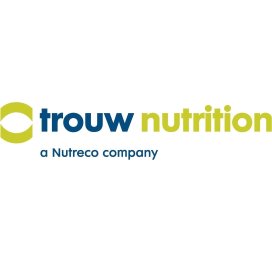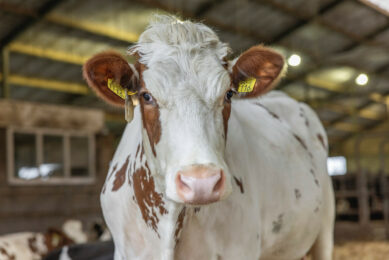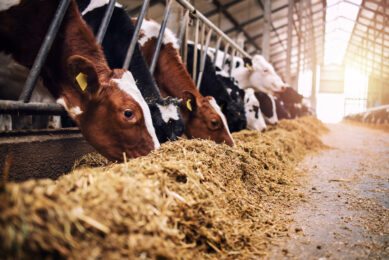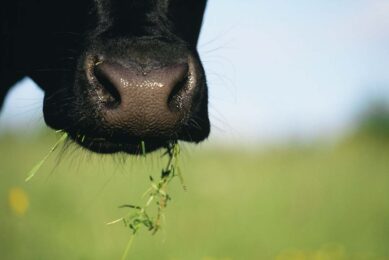Hello dairy model: Is this diet change a smart choice?
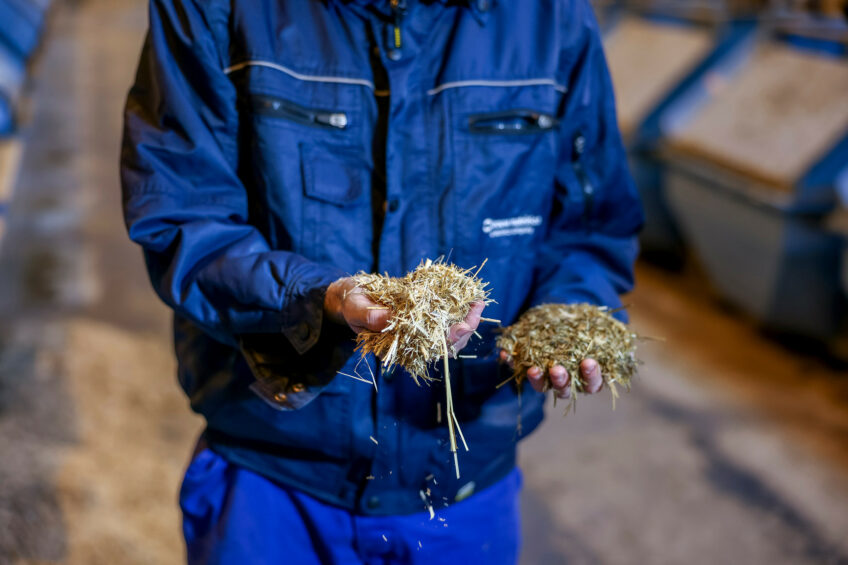
What happens with my milk yield, milk solids and income over feed costs if I change the crude protein level, introduce a new ingredient, or make a management change? We do not want this to be guesswork. Trouw Nutrition has advanced dairy models to help with these complex questions. Digital twin technology and new nutritional insights make these models even smarter.
In the dairy industry, we have become very accustomed to evaluating forages and ingredients on a regular basis. This is because the inputs for a dairy ration can be quite variable in terms of nutritional content and/or quality. Home-grown forages and silages produced can vary a lot from farm to farm and from region to region. Also, some farmers use more by-products from the food industry for example, while in other parts of the world this is not widespread practice. Overall, we can say that working with variable ingredients in dairy nutrition led to in-depth knowledge of feed evaluation and has improved dairy cow rationing considerably.
The NutriOpt Dairy Model
The nutritional expertise of Trouw Nutrition on formulation, feed evaluation and nutrient dynamics come together in its distinctive requirement (rationing) tool: the NutriOpt Dairy Model. This model defines the feeding strategy, based on the available raw materials, forages, prices, and cow parameters. It considers unique rumen parameters and the digestion kinetics taking place along the whole digestion tract. Christopher Powell, ruminant modelling expert at Trouw Nutrition explains: “This model is a solid and proven way to balance rations based upon targeted milk yield, milk solids and animal characteristics in addition to its ability to predict milk yield derived from the nutrient supply of the proposed ration. The model allows nutritionists to match the feed offered to ruminants with their specific nutrient requirements and do this in a cost-effective way (using the digestion kinetic and nutrient utilisation model in combination with least cost formulation software). It is also a dynamic model, meaning the nutrient value of a given ingredient is not fixed, but depends on animal characteristics, such as body weight, dry matter intake in addition to rumen modifying feed additives.”
Research from Bach et al showed that every cow, and herd, is unique and responds differently, even if they share common genetics
Same diet, different outcome
While current models such as the NutriOpt Dairy Model take nutrient kinetics and dynamics into consideration, the same diet can still lead to different performance responses in cows. This is because non-dietary factors such as rearing strategies, feed bunk management and stocking density also influence milk production, as shown by Bach et al. (2008). In this research, the same ration was fed to 47 different dairy herds (sharing a common genetic base), leading to an average milk production per cow that ranged from 20.6 to 33.8 kg/d. (Figure 1). Powell explains: “This research showed that every cow, and herd, is unique and responds differently, even if they share common genetics. It also confirms that many factors are involved in overall milk output. A key to successful dairy farming and a challenge for dairy nutritionists is to understand the impact of these variables.”
Figure 1 – When the same diet is fed to different cows, milk output is highly variable.
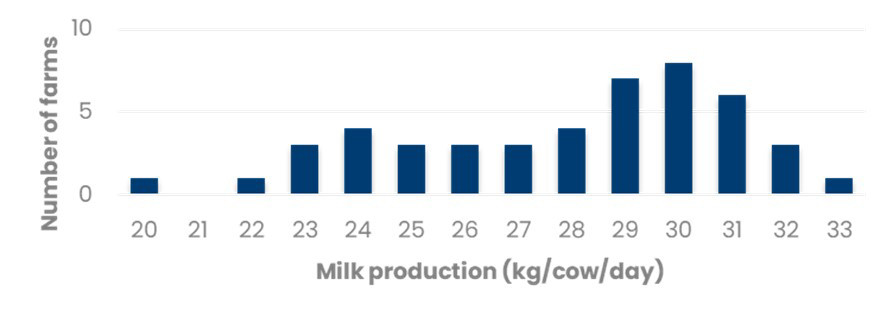
Model evaluation and improvement
Trouw Nutrition’s requirement model is used by in-house nutritionists, but also external feed consultants and advisers to formulate the best possible diet for their customers. “It is an extremely valuable tool to make sure we match the diet (input) with the production level (output) in lactating cows, or (body weight gain and body condition score amongst others) when used for heifers and dry cows. At the same time, the fundamental research on nutrition continues, making model validation a vital part of model building and necessary to evaluate a model’s quality and reliability,” Powell addresses.
He continues: “An important innovation we are developing in our requirement model is the concept of grouping amino acids (AA) to better balance them in the ration. This regrouping is based on our increased understanding of their metabolic fate within the mammary gland. “This means that once an AA enters the mammary gland, it can be incorporated into milk protein or catabolized for a non-essential AA synthesis and/or energy production. Some AA are transferred to milk on a 1:1 ratio between uptake and output and therefore are critical to meet the animal’s requirement for milk production (group 1). Others have a higher uptake in the mammary gland than utilised in the milk, while group 3 consists of the non-essential AA (Figure 2). This new concept in our requirement model helps nutritionists to become more comfortable reducing crude protein (CP) levels in the diet, while ensuring the relevant AAs needs are met.”
Figure 2 – The 3 groups of amino acids (AA) and their mammary gland metabolism / uptake (U:O = Uptake:Output). Source: Nichols et al. (2019).
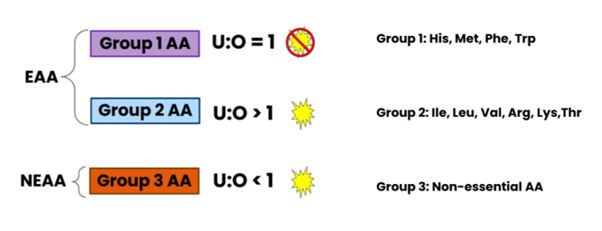
More complex questions to answer
While Trouw Nutrition is constantly fine-tuning its current (requirement) models, the company also works on developing more advanced models. “These are the so-called response models that allow us to predict the changes in milk (and milk solids) and income over feed costs when changes are made in diet formulation, management, or environment. And this will help nutritionists better deal with the complex dilemma to formulate on costs, performance, health, and sustainability,” says Powell. Some of the questions that are on the nutritionist’s plate more often – and can be solved with response models – are:
- What happens with milk output and nitrogen efficiency when I lower the crude protein (CP) level in the diet?
- When I reduce my carbon footprint of the feed (to meet my sustainability targets), what does this mean for feed costs and milk output?
- What dietary changes do I need to make to increase the milk fat percentage? And is this change cost effective?
Optimisation through machine learning AI
To solve these (more) complex questions, dairy models move from ‘predicting absolute milk yield production from the current (known) diet’ to models that can ‘predict the changes in the milk yield and solids when there is a diet (or other) change.’ And this can result in different choices being made if you know what the bottom line of that choice is. Figure 3 shows an example of the differences in ‘income over feed costs’ when concentrate inclusion changes (plus or minus 2.5 kg).
Figure 3 – My cows are producing 35kg per cow per day. If I change the concentrate intake with my current compound price of € 0.30/kg and milk price of €0.46/kg how does that impact my income over feed costs?
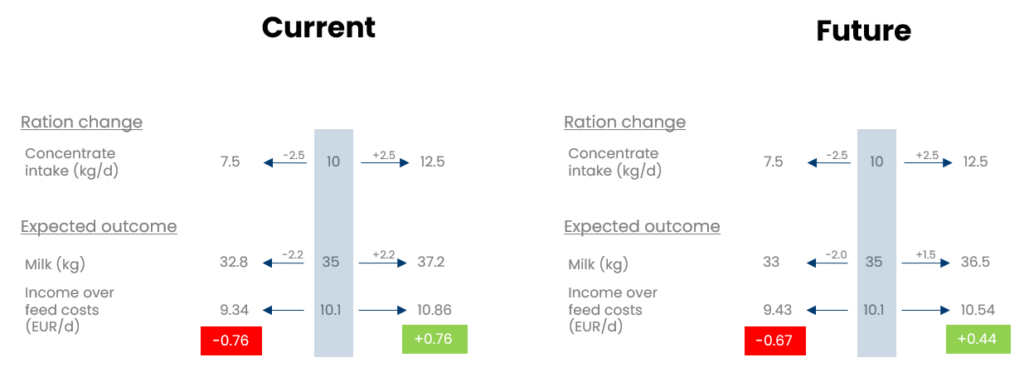
Powell explains: “To be able to make accurate response predictions, you need a lot of data. During his PhD, Jean-Baptise Daniel, ruminant researcher at Trouw Nutrition, laid the foundation for response modelling in lactating cows. He conducted a meta-analysis to explore the ‘response to energy and protein supply.’ The study was based upon 250 publications, each discussing 4-5 different diets and associated milk response. This work led to a dataset of around 4,000 dietary treatments and associated milk responses. Taking this research further, this data was ‘fed’ into a machine learning AI allowing us to make more accurate predictions. By feeding the models with new data, the model gets better and better over time.”
By feeding the models with new data, the model gets better and better over time
Response data for better decision-making
More than ever – dairy rations need further optimisation. We must produce more with less (resources), driving the quest for efficiency gains at all levels. In addition, more (new) ingredients are being explored and used in dairy diets, that are either more cost-effective or have a lower carbon footprint. The increased number, and variety of dietary inputs and associated change in producers’ goals makes rationing more complex, and rations may undergo more changes than before. Powell concludes: “The current feeding (requirement) models used in dairy are becoming more accurate. Also, next-generation models are being developed, which will allow us to further optimise a ration based on specific producer goals, move from least-cost formulations to income over feed costs and improve rations for nitrogen efficiency, among others.”
Join 13,000+ subscribers
Subscribe to our newsletter to stay updated about all the need-to-know content in the dairy sector, two times a week.


